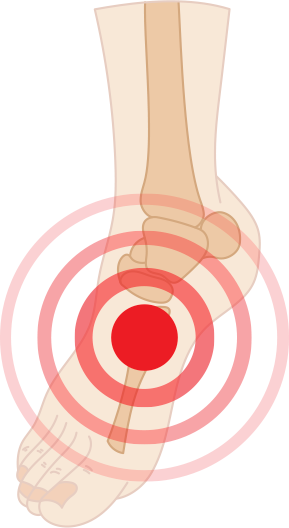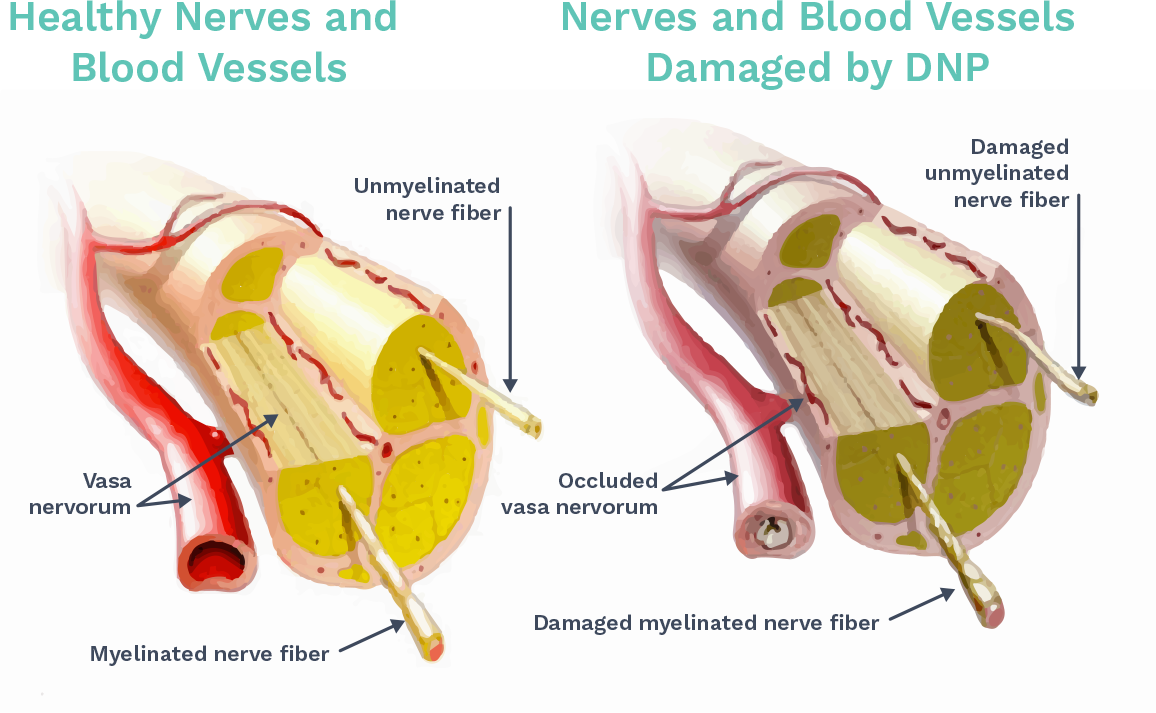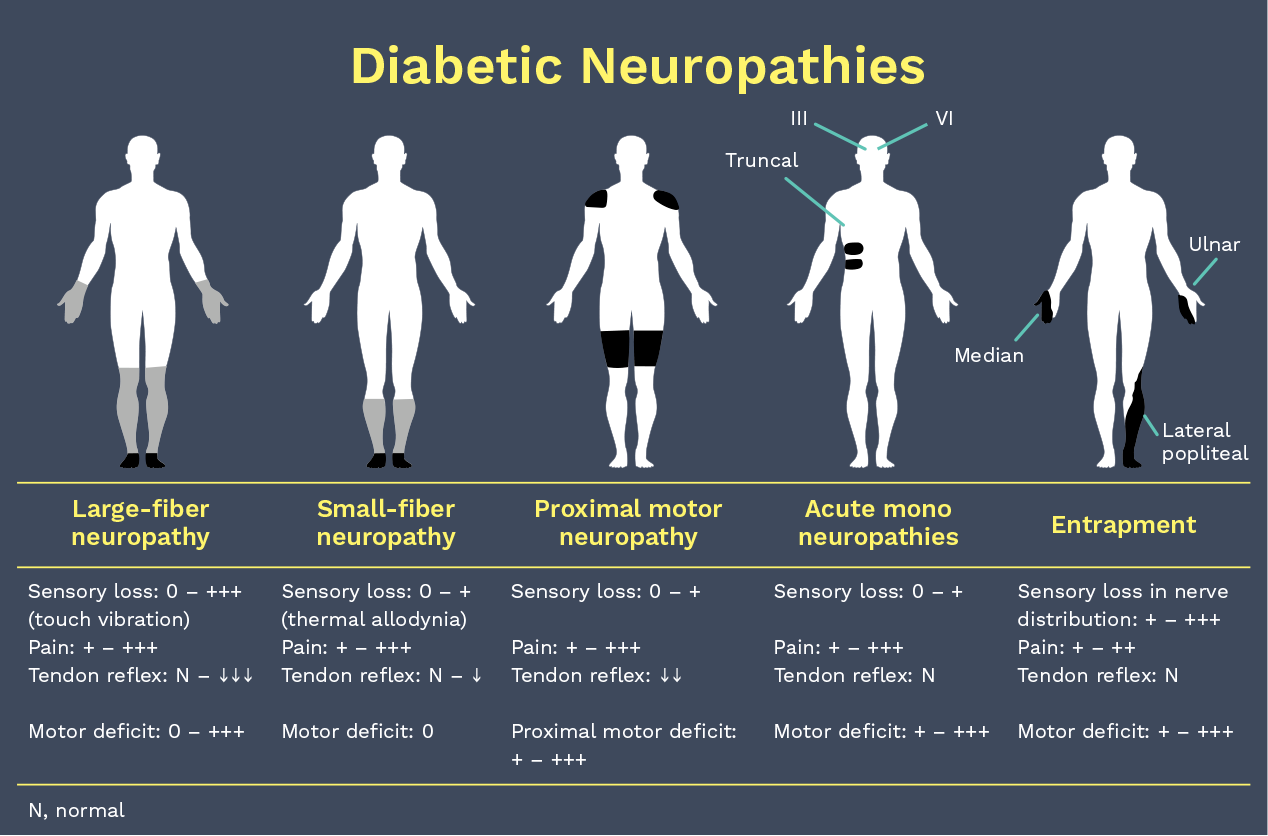
Diabetic Neuropathic Pain (DNP) is the most common and troublesome complication of diabetes mellitus, leading to the greatest rate of morbidity and mortality, and resulting in a huge economic burden for diabetes care. It is the most common form of neuropathy in the developed countries of the world. In addition, DNP accounts for more hospitalizations than all the other diabetic complications combined, and is responsible for 50 to 75% of non-traumatic amputations.
DNP is a set of clinical syndromes that affect distinct regions of the nervous system, singly or combined. It may be silent and go undetected while exercising its ravages; or it may present with clinical symptoms and signs that, although nonspecific and insidious, also mimic those seen in many other diseases. DNP is, therefore, diagnosed by exclusion.
6.25 million Americans are disabled due to DNP.

Figure 1
As depicted in Figure 1, the main pathology behind DNP is damage to small unmyelinated fibers.
Figure 2 describes the different classifications of DNP:
